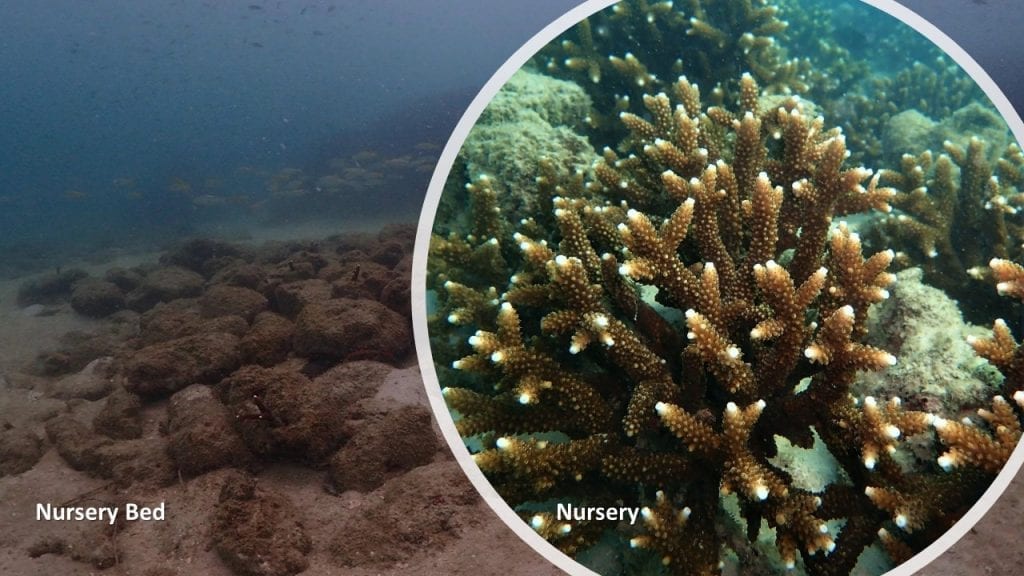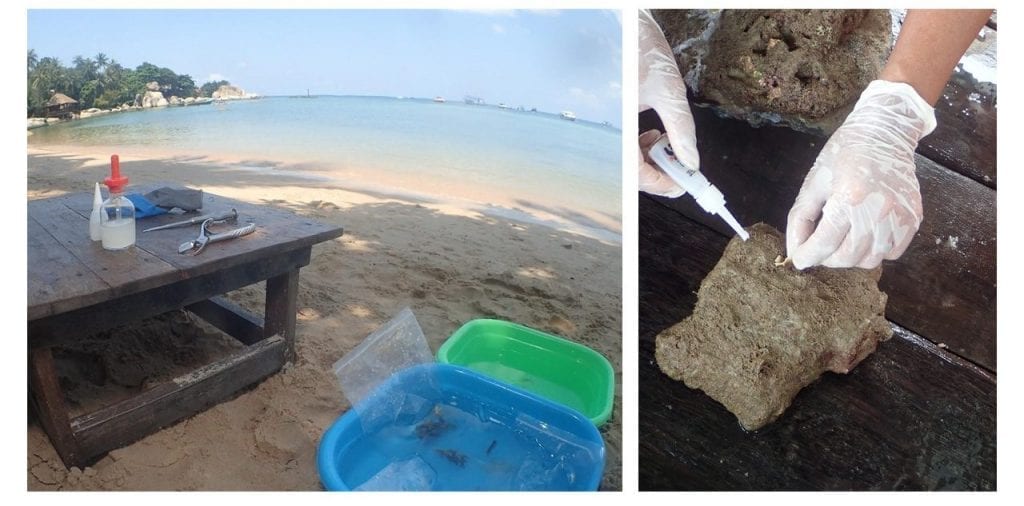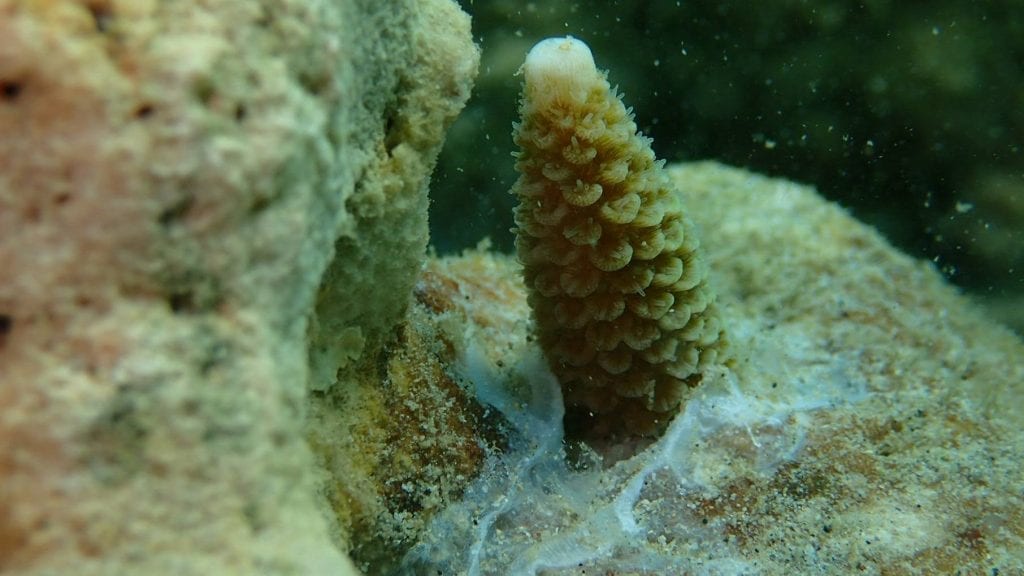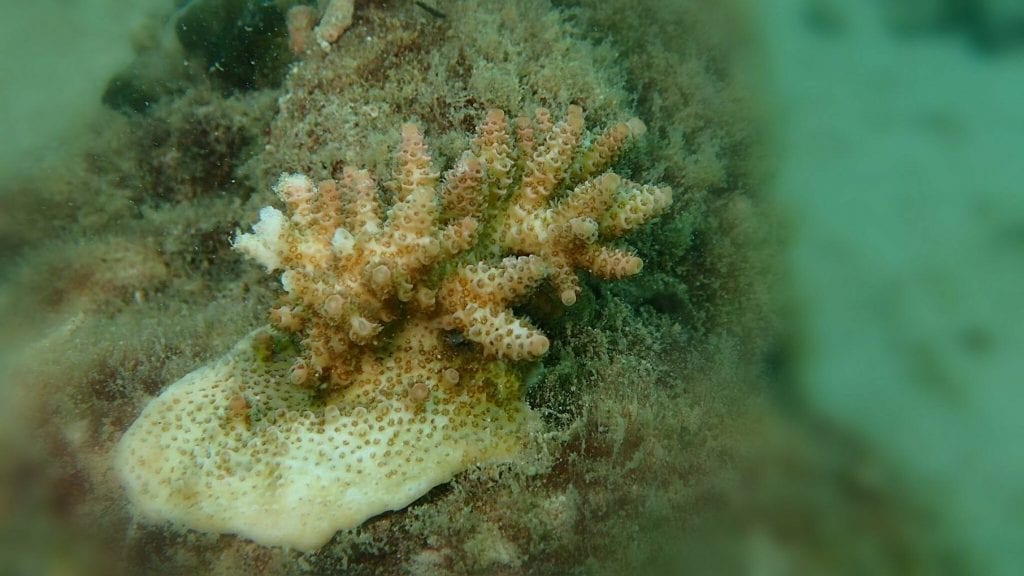Growing corals is a delicate balance – restoring our reefs without presenting more unnatural materials into our oceans. When I joined Ocean Quest Global, I was introduced to a completely new technique of growing corals. This method is based on an entirely organic approach without introducing any artificial structures, like plastic pipes, tires or metal structures, to the marine environment. If corals do not grow, no harmful material is left behind which is why this is the most preferred approach. The simplicity of this technique and the cost-effectiveness of the materials gave me the opportunity to plant corals in the community I live in and share its practice with not only scientists, but everyone around me.

When we speak of coral reefs, we often refer to them as underwater rainforests, yet the base of a reef is built by animals and corals, not plants. Naturally translucent polyps (AKA the animals primarily responsible for building reefs) live in a self-made calcareous skeleton, displaying vibrant colors from algae living inside them. They are vicious predators at night, catching planktonic organisms, and they act like plants during the day, soaking up sunlight so their symbiotic algae partners can photosynthesize providing food for the coral as a result.
When corals get stressed from hot water or pollution, they react by expelling the algae, leaving a bleached-looking coral behind, hence the term “coral bleaching”. If this event lasts too long, the coral will starve and eventually die.
The ocean has already lost up to 50% of its coral reefs. Climate change leading to warmer waters and ocean acidification, destructive fishing practices, and marine pollution are killing reefs around the world. Without immediate protection and long- term solutions like drastic changes in climate change actions, these tropical ecosystems could face extinction.
“The ocean has already lost up to 50% of its coral reefs.”
The critical need to help the world’s coral reef ecosystems is exactly why I plant corals and set up nurseries. By restoring previously damaged reefs we can create again a naturally growing habitat that is self-sustaining for their inhabitants and provide food and shelter. This in turn will continue to support the livelihood of local communities who depend on it as well promotes education, by showing the visible proof that a healthy coral reef supports life!

Every location is different, hence, wherever we plant corals, we have different preparations and set ups. Here in La Union, Philippines, I snorkel and survey for a suitable site for coral propagation. Then I look for substrate and coral fragments to use. (The substrates are natural broken pieces of coral skeleton lying around on the seafloor and are the base for the coral to grow on.) Live coral fragments are sampled as well but never from healthy colonies; usually they are broken coral pieces laying around due to natural or human impact.
After gathering all l need underwater, I go back to the shore for the actual planting process. Everything is done next to the water, where already prepared planting material is awaiting.

Now I take my substrate, apply superglue, attach the coral fragment then I add a few drops of the patented organic catalyst of Ocean Quest Global to harden the superglue, and voila! I have my first planted coral. This process takes less than a minute, and under perfect conditions, I can plant one hundred corals alone in three hours.

A nursery is completely natural and is set up directly in the sea between 3 to 6m depth. After I am done planting, I grab one planted coral after another and put them into the assigned location next to each other. Once or twice a week, I visit the nursery to check on the coral growth and look for eventual threats, like predators or human disturbances. It takes about two weeks for the superglue and catalyst to completely dissolve, giving the coral enough time to attach themselves on the substrate and keep on growing. After three months, you can see the attachment of the coral and witness growth. After six months, depending on the species, corals have significantly increased in size.
The reward of such natural nurseries is not only coral growth but also that marine species are starting to come and live in the nursery as it provides a habitat. As the substrate is organic, no cleaning is required because the nursery is self-sustaining through the marine species it attracts.

The job isn’t finished when I am back on land. I rely on portable technology to help document coral reef data, track progress and quickly upload underwater footage from any location. For example, my convertible ThinkPad Yoga gives me the flexibility to adapt to any work situation and helps me productively create educational content around preserving our ocean’s coral reefs and how simple actions and collective efforts can achieve sustainable outcomes.
Follow me on Instagram (@seariavitz) to be a part of my #LenovoInnovators journey and support my mission of preserving our ocean’s coral reefs.
